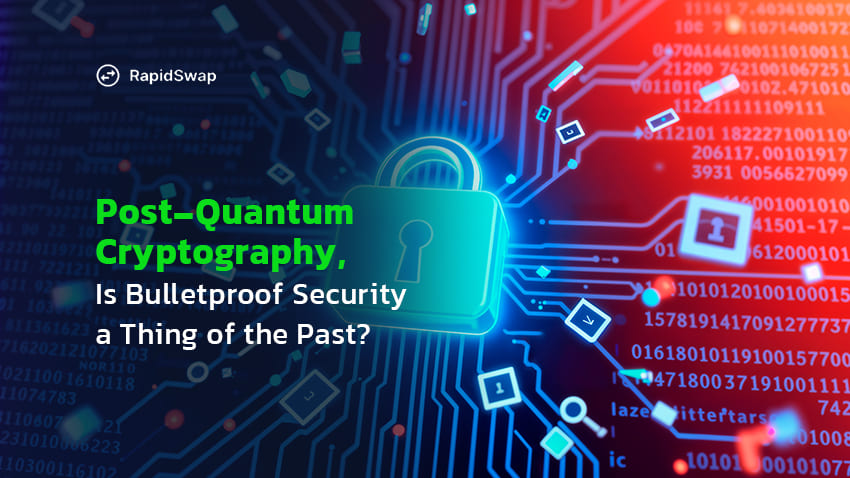The digital world is on the brink of a quantum revolution. While traditional computers handle data in bits, quantum computers process information in qubits, offering vastly superior computational power. This breakthrough could bring about a host of advancements, but it also presents a significant threat to modern cryptographic methods. Current encryption protocols, considered “bulletproof” by today’s standards, may be rendered vulnerable by quantum computing capabilities. Post-quantum cryptography aims to address this issue, developing new algorithms and protocols to secure our digital future.
In this article, we’ll explore the potential impact of quantum computing on traditional cryptography, examine the principles of post-quantum cryptography, and assess whether truly “bulletproof” cryptography can still exist in a quantum world.
Why Quantum Computing Threatens Today’s Cryptography
Most modern cryptographic protocols, including RSA, ECC (Elliptic Curve Cryptography), and AES (Advanced Encryption Standard), rely on complex mathematical problems that are computationally infeasible for current computers to solve within a reasonable timeframe. However, with the advent of quantum computing, algorithms like Shor’s algorithm and Grover’s algorithm pose direct threats to these cryptographic systems:
- Shor’s Algorithm: Quantum computing enables Shor’s algorithm to factor large numbers efficiently, breaking RSA and ECC encryption protocols that rely on the difficulty of this factorization.
- Grover’s Algorithm: Although not as effective as Shor’s for breaking symmetric cryptography, Grover’s algorithm can still speed up brute-force attacks on symmetric encryption like AES by a square root factor, effectively halving the key strength.
The result? Encryption systems we rely on today may soon be at risk, potentially compromising sensitive data worldwide. This impending threat has motivated researchers to develop post-quantum cryptography—a new class of encryption methods designed to withstand quantum attacks.
Understanding Post-Quantum Cryptography
Post-quantum cryptography (PQC) refers to cryptographic algorithms and protocols that remain secure even against attacks from quantum computers. Unlike traditional cryptography, which relies on factorization or discrete logarithms, PQC is based on mathematical problems that are hard for both classical and quantum computers to solve. These include lattice-based, hash-based, multivariate polynomial, and code-based encryption systems.
The National Institute of Standards and Technology (NIST) is actively working to standardize post-quantum algorithms, expecting to finalize its recommendations in the near future. Some of the promising candidates in the field include:
- Lattice-Based Cryptography: This form of cryptography uses complex lattice structures, which are difficult to solve even with quantum computing. Algorithms like Kyber and NTRU leverage this approach and are strong contenders for post-quantum encryption.
- Hash-Based Cryptography: Secure hash functions, such as those in the Merkle signature scheme, are resistant to quantum attacks and provide a foundation for building robust post-quantum protocols.
- Code-Based Cryptography: Algorithms like McEliece encryption utilize complex error-correcting codes, which are also difficult for quantum computers to decipher.
- Multivariate Polynomial Cryptography: Based on multivariate equations over finite fields, algorithms like Rainbow aim to offer secure and efficient digital signature solutions.
These algorithms are being tested not only for security but also for their practicality, including performance and scalability.
Challenges in Achieving “Bulletproof” Post-Quantum Security
Post-quantum cryptography aims to provide quantum-resistant security, but achieving a truly “bulletproof” solution is complex. Some challenges include:
- Performance: Many post-quantum algorithms are computationally intensive and can significantly slow down encryption processes. Balancing security with usability is essential, especially for applications requiring real-time data transfer.
- Storage Requirements: Certain PQC algorithms, such as code-based systems, require substantial storage space due to large key sizes. This can pose challenges in environments with limited resources.
- Scalability: Implementing post-quantum cryptography on a large scale involves extensive infrastructure updates and potential interoperability issues across different systems.
- Testing and Standardization: As post-quantum cryptography is a relatively new field, testing these algorithms against a variety of potential threats is crucial before they are widely adopted.
Does Bulletproof Cryptography Still Exist?
While the term “bulletproof” implies absolute security, no system can ever be entirely immune to attacks. Instead, the goal of post-quantum cryptography is to make encryption “quantum-resistant”—extremely difficult, if not impossible, for a quantum computer to break within a practical timeframe. However, just as new security protocols emerge, so do innovative attack methods. The landscape of cryptography is thus an ongoing race to stay one step ahead of potential threats.
Post-quantum cryptography represents our best hope for a secure digital future, but it requires vigilance and continuous development to maintain high standards of security. With ongoing research and collaboration, organizations and governments worldwide are working towards a robust infrastructure capable of withstanding even the quantum era’s most sophisticated attacks.
Adopting Post-Quantum Cryptography: A Necessary Evolution
Industries handling sensitive data, such as finance, healthcare, and government sectors, are already exploring the adoption of post-quantum algorithms. As standards become finalized, organizations will need to prepare for this shift by updating their cryptographic infrastructure and training personnel to understand and implement post-quantum security.
The proactive adoption of post-quantum cryptography not only protects sensitive data but also fosters trust among customers and stakeholders. Companies that prioritize these security measures will be better equipped to handle quantum-era challenges, making them leaders in the realm of data security.
Quantum computing’s rise marks a new era, presenting both incredible opportunities and significant challenges to cybersecurity. While “bulletproof” cryptography may not exist in an absolute sense, post-quantum cryptography offers a promising path to securing data against quantum threats. By understanding the principles of PQC and preparing for the quantum shift, individuals and organizations can safeguard their digital assets and protect the future of data security.

